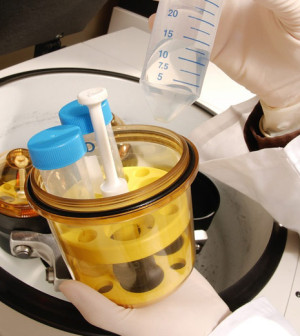- Skip Storing This Everyday Product in the Fridge Door
- Green Tea + B3 Pairing May Boost Brain Health
- Navigating Your Midlife Crisis: Embracing New Possibilities
- City Raccoons Showing Signs of Domestication
- Mapping the Exposome: Science Broadens Focus to Environmental Disease Triggers
- One Week Less on Social Media Linked to Better Mental Health
- Your Brain Changes in Stages as You Age, Study Finds
- Some Suicide Victims Show No Typical Warning Signs, Study Finds
- ByHeart Formula Faces Lawsuits After Babies Sickened With Botulism
- Switch to Vegan Diet Could Cut Your Greenhouse Gas Emissions in Half
Live Liver Transplants Seem Safe, Effective for Sudden Liver Failure


Liver transplants from live donors appear to work just as well as traditional transplants for patients with sudden (acute) liver failure, new research suggests.
What’s more, people who donate a portion of their liver (live donors) don’t seem to have any serious complications as a result of the donation procedure.
“Since acute liver failure can deteriorate within hours or days to coma or death, waiting time is critical for this patient group,” wrote Dr. Markus Selzner, of the Multi-Organ Transplant Program at Toronto General Hospital in Canada.
“If a living donor is available, liver transplantation can be performed without delay, reducing the risk of death or permanent disability of the recipient,” he said.
The study authors explained that without a liver transplant, more than 80 percent of people with acute liver failure ultimately fall into a coma and die.
The problem is there’s a severe shortage of available livers from people who have just died, the researchers pointed out.
Yet, it’s been unclear whether taking a liver donation from a person still alive is safe (for both donors and patients) and effective.
The new study compared live- and deceased-donor liver transplants. All of the surgeries took place at Toronto General Hospital between 2006 and 2013. Seven patients received a liver from a live donor. Twenty-six received a liver from a recently deceased person.
The researchers found that by all measures, the two procedures achieved similar results. Both types of procedures also had similar risks, the study authors reported.
For example, recipients of live donor transplants experienced post-surgery complications 31 percent of the time. Those who received a donor from someone recently deceased had complications 43 percent of the time, the researchers found.
The study found no difference in recipient survival rates up through five years post-transplant. The procedure appeared to be safe for live donors, too.
Still, in an accompanying editorial, Dr. Jean Emond of Columbia University in New York City and Dr. Charles Rosen from the Mayo Clinic in Rochester, Minn., cautioned that “further experience is necessary to demonstrate that urgent evaluations can be done safely, accurately, and with avoidance of coercion and undue stress on potential donors and their families.”
The findings were published online March 19 in the American Journal of Transplantation.
More information
There’s more on liver transplantation at the U.S. National Institute of Diabetes and Digestive and Kidney Diseases.
Source: HealthDay
Copyright © 2025 HealthDay. All rights reserved.










